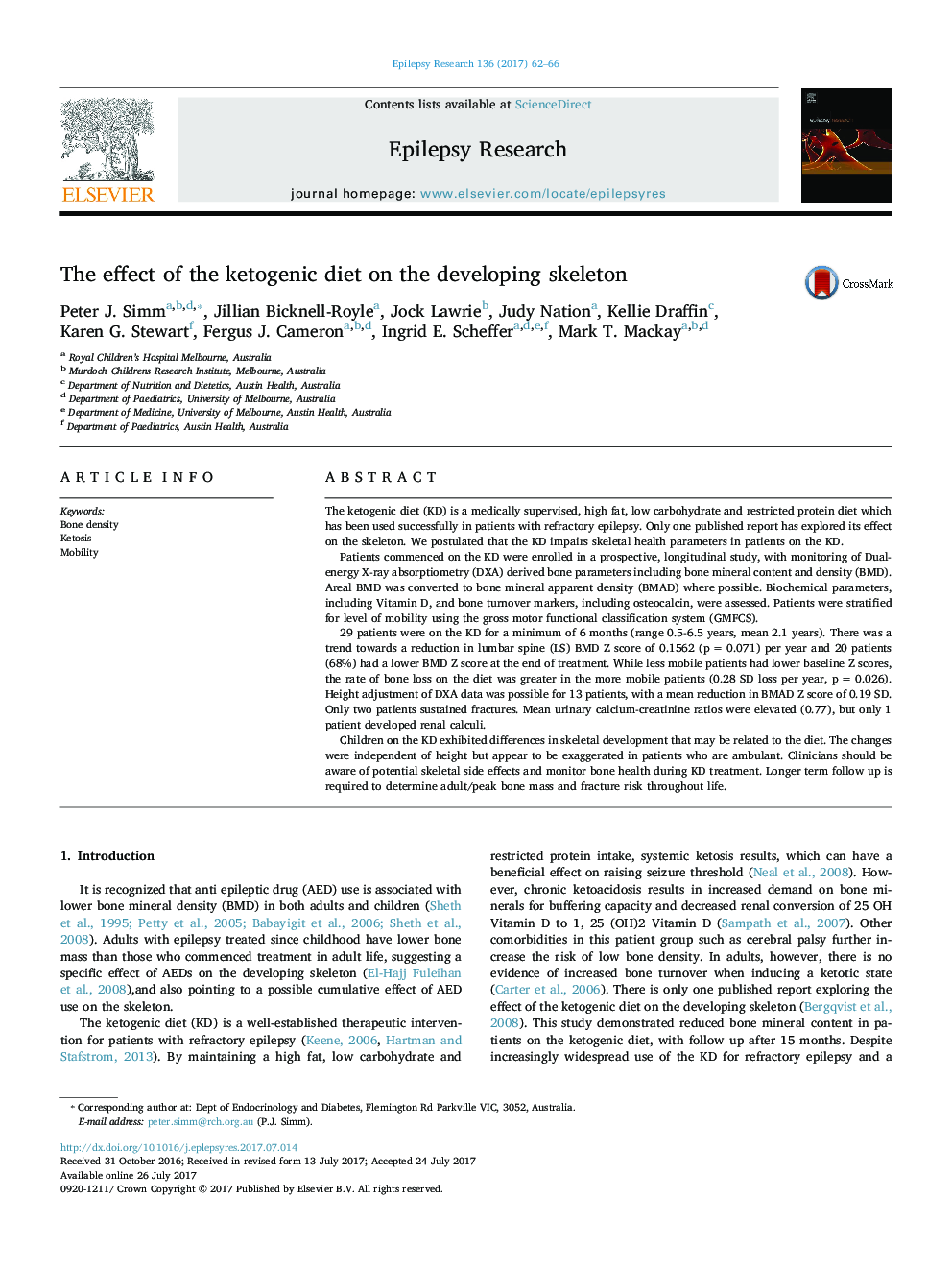| کد مقاله | کد نشریه | سال انتشار | مقاله انگلیسی | نسخه تمام متن |
|---|---|---|---|---|
| 5628701 | 1579887 | 2017 | 5 صفحه PDF | دانلود رایگان |
- Bone health outcomes of patients on the ketogenic diet have only been reported once to date.
- This study shows falling bone mineral density especially in ambulant patients.
- Ongoing studies exploring fracture risk and other bone health outcomes are required.
The ketogenic diet (KD) is a medically supervised, high fat, low carbohydrate and restricted protein diet which has been used successfully in patients with refractory epilepsy. Only one published report has explored its effect on the skeleton. We postulated that the KD impairs skeletal health parameters in patients on the KD.Patients commenced on the KD were enrolled in a prospective, longitudinal study, with monitoring of Dual-energy X-ray absorptiometry (DXA) derived bone parameters including bone mineral content and density (BMD). Areal BMD was converted to bone mineral apparent density (BMAD) where possible. Biochemical parameters, including Vitamin D, and bone turnover markers, including osteocalcin, were assessed. Patients were stratified for level of mobility using the gross motor functional classification system (GMFCS).29 patients were on the KD for a minimum of 6 months (range 0.5-6.5 years, mean 2.1 years). There was a trend towards a reduction in lumbar spine (LS) BMD Z score of 0.1562 (p = 0.071) per year and 20 patients (68%) had a lower BMD Z score at the end of treatment. While less mobile patients had lower baseline Z scores, the rate of bone loss on the diet was greater in the more mobile patients (0.28 SD loss per year, p = 0.026). Height adjustment of DXA data was possible for 13 patients, with a mean reduction in BMAD Z score of 0.19 SD. Only two patients sustained fractures. Mean urinary calcium-creatinine ratios were elevated (0.77), but only 1 patient developed renal calculi.Children on the KD exhibited differences in skeletal development that may be related to the diet. The changes were independent of height but appear to be exaggerated in patients who are ambulant. Clinicians should be aware of potential skeletal side effects and monitor bone health during KD treatment. Longer term follow up is required to determine adult/peak bone mass and fracture risk throughout life.
Journal: Epilepsy Research - Volume 136, October 2017, Pages 62-66
